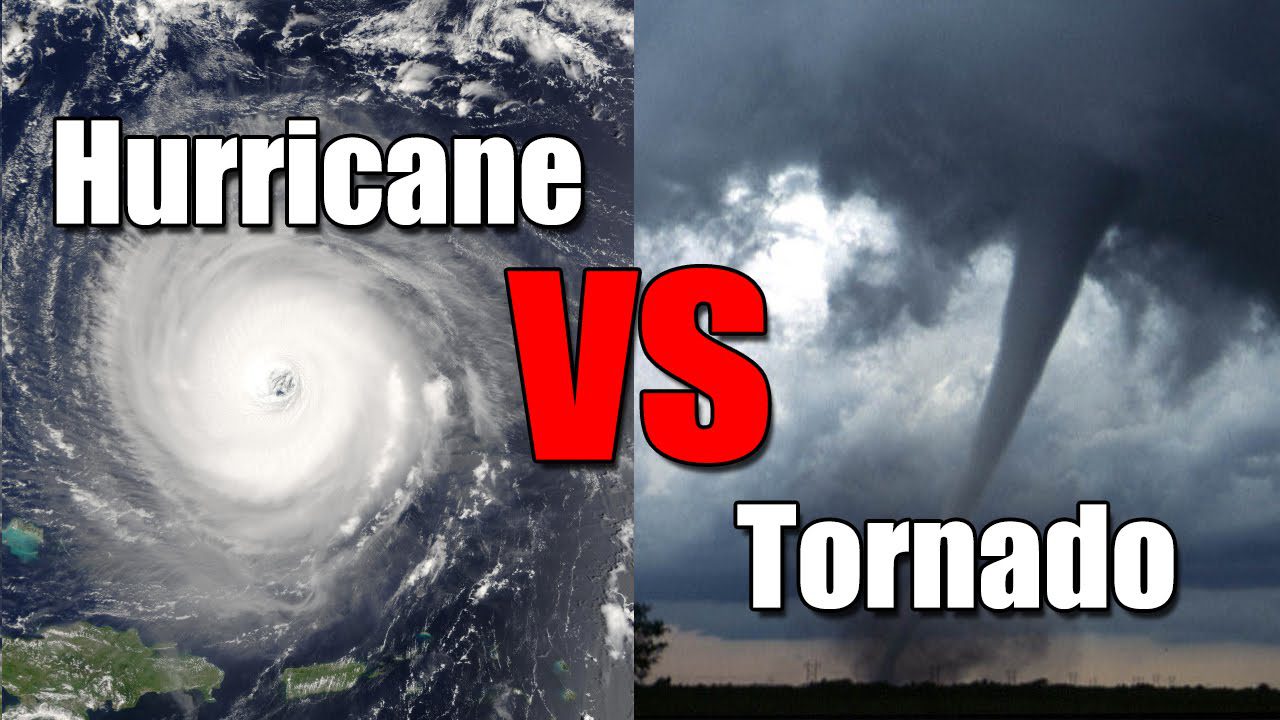Hurricanes and tornadoes are two of the most powerful and destructive natural disasters. Hurricanes form over warm ocean waters with low pressure centers and strong winds, while tornadoes form within severe thunderstorms with rotating columns of air. Hurricanes are massive storms that can span hundreds of miles in diameter and last for several days, causing widespread destruction. Tornadoes, on the other hand, are smaller in size but more intense, with an average width of 250 feet and lasting only a few minutes. Both storms require preparation and caution to minimize their impact on communities.
Hurricane vs. Tornado: Comparing Nature’s Most Powerful Forces
Introduction
Natural disasters are powerful and destructive forces that can wreak havoc on communities and landscapes. Two of the most common and destructive natural disasters are hurricanes and tornadoes. While they may seem similar in some ways, they are actually very different in terms of how they form, their size, and their destructive capabilities.
Formation
Hurricanes: Hurricanes form over warm ocean waters as clusters of thunderstorms that move in a circular pattern. They are characterized by low pressure centers and strong winds that can reach speeds of over 74 mph.
Tornadoes: Tornadoes form within severe thunderstorms when warm, moist air meets cool, dry air, creating a rotating column of air. They are characterized by their funnel shape and destructive winds that can reach speeds of over 200 mph.
Size
Hurricanes: Hurricanes are massive storms that can span hundreds of miles in diameter. They can also extend vertically into the upper atmosphere, reaching heights of over 12 miles.
Tornadoes: Tornadoes are much smaller in size compared to hurricanes, with an average width of 250 feet and a height of less than a mile. They are also relatively short-lived, typically lasting only a few minutes.
Destructive Capability
Hurricanes: Hurricanes are known for their widespread destruction, causing damage to homes, buildings, infrastructure, and natural landscapes. They can also produce storm surges, flooding, and high winds that can cause significant damage.
Tornadoes: Tornadoes are highly destructive forces that can level entire neighborhoods and communities in a matter of minutes. They can also toss cars, trees, and other debris, causing widespread damage and loss of life.
Duration
Hurricanes: Hurricanes can last for several days as they move across large bodies of water and land. They usually weaken once they make landfall and move inland.
Tornadoes: Tornadoes are short-lived events that typically last for only a few minutes. However, some tornadoes can last for longer periods of time and travel long distances, causing even more destruction.
Conclusion
While hurricanes and tornadoes are both powerful and destructive natural disasters, they are distinct in how they form, their size, and their destructive capabilities. Hurricanes are massive storms that can cause widespread damage over large areas, while tornadoes are smaller but more intense storms that can cause localized devastation in a short amount of time. Both storms are dangerous forces of nature that require preparation and caution to minimize their impact on communities.
